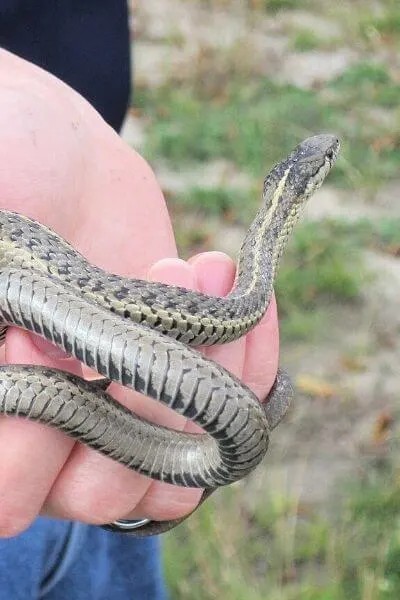Garter snakes, often encountered in gardens and various habitats, are fascinating creatures. If you’ve ever spotted one slithering through your backyard and wondered, “What Do Garter Snakes Eat?”, you’re in the right place. These adaptable reptiles play a vital role in their ecosystems, and understanding their diet is key to appreciating their presence. This guide will delve into the diverse menu of garter snakes, exploring what they eat in different environments and how their dietary habits contribute to the balance of nature.
Understanding Garter Snakes
Before diving into their diet, let’s understand a bit more about garter snakes themselves. The term “garden snake” is a common nickname, but “garter snake” is the more accurate and widely recognized name. Belonging to the genus Thamnophis, garter snakes are incredibly adaptable and can be found across a wide range of climates and habitats throughout North America, from chilly northern regions to warmer southern areas. This adaptability extends to their diet, making them opportunistic feeders.
Identifying Garter Snakes
Garter snakes are generally easy to identify. They typically display a pattern of stripes running lengthwise down their bodies, often in shades of green, brown, or black. Some may have checkered patterns instead of stripes. Adult garter snakes usually reach lengths of 2 to 3 feet, though size can vary depending on the species and environment. Their non-venomous nature and relatively small size make them harmless to humans, further contributing to their reputation as garden helpers.
The Carnivorous Diet of Garter Snakes
Garter snakes are carnivores, meaning their diet consists entirely of animals. They are not picky eaters and will consume a variety of prey depending on what’s available in their habitat. Being opportunistic hunters, they swallow their prey whole. Garter snakes are most active in warmer temperatures, often hunting during the day. In colder months, they hibernate, usually congregating in dens with other snakes for warmth.
Garter Snake Diet on Land
In drier, land-based environments, garter snakes have a varied diet. Earthworms are a staple food source, readily available in gardens and soil. They also prey on insects, slugs, and snails, making them beneficial for gardeners dealing with these common pests. Rodents, particularly mice, are another significant part of their diet, helping to control rodent populations. Lizards and even birds that they can overpower may also become meals. Essentially, if it’s a living creature they can catch and swallow, a garter snake is likely to eat it.
Alt text: A person gently holds a garter snake in their hand, showcasing its non-aggressive nature and prompting the question about its diet.
Garter Snake Diet Near Water
For garter snakes living near water sources like ponds, streams, or wetlands, their diet expands to include aquatic prey. Fish, tadpoles, frogs, and salamanders become available food options. They also consume leeches and toads. Interestingly, garter snakes possess a remarkable immunity to the toxic secretions produced by toads, which deter many other predators. This allows them to prey on toads without harm, further diversifying their diet in aquatic habitats.
Alt text: Image depicting a garter snake in the process of eating a frog, visually illustrating their carnivorous feeding habits.
Feeding Pet Garter Snakes
If you keep a garter snake as a pet, it’s important to replicate their natural diet as closely as possible. The specific food you offer will depend on where the snake originated, reflecting whether it came from a drier or more aquatic environment. Earthworms are a readily accepted food source for most garter snakes. You can also offer slugs, snails, and fresh, whole fish. When feeding fish, ensure it is fresh and whole to provide complete nutrition. Leeches can be offered to garter snakes accustomed to aquatic diets.
Alt text: Close-up photo of several garter snakes showing their characteristic stripes and patterns, inviting curiosity about their dietary needs.
Garter Snakes in Your Garden: Natural Pest Control
For gardeners, garter snakes are beneficial allies. Their appetite for slugs, snails, and rodents makes them natural pest control agents. If you’re dealing with these garden pests, having garter snakes around can be advantageous. They are harmless to humans and pets, and their presence is a sign of a healthy garden ecosystem. Instead of fearing these slithering neighbors, consider them helpful partners in maintaining a balanced and thriving garden.
Conclusion
Garter snakes are adaptable carnivores with a diverse diet that varies based on their habitat. From earthworms and insects on land to fish and amphibians near water, they play an important role in controlling populations of various creatures. Understanding what garter snakes eat not only satisfies our curiosity but also highlights their ecological significance, particularly as natural pest controllers in our gardens. Embracing these harmless snakes can contribute to a healthier and more balanced outdoor environment.
